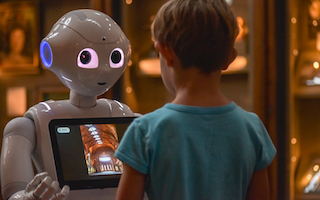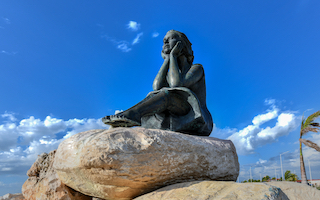The events of the past few years have demonstrated time and again that the world is rapidly changing and, with it, the cultural heritage sector. Out of mounting global uncertainties arises an urgent need to reconsider how strategic planning can help us better prepare for the future. ICCROM launched the Foresight Initiative in 2021 to strategically explore the future of cultural heritage.
Recognizing the value of foresight
Conventional thinking about the future tends to assume a ‘business-as-usual’ mentality, extrapolating likely trajectories from past or current trends. By contrast, strategic foresight is an approach to identifying potential changes in the longer term and exploring their implications for the future. Beyond a typical quarterly or annual purview, foresight practices can target anywhere from 10 to upwards of 50 years ahead, effectively providing organizations with a toolbox for developing forward-thinking strategies that anticipate and even shape coming trends.
Over the past several years, foresight has garnered increasing attention on the world stage, particularly in government and industry, and most recently at the COP26 summit, where there was a call for better climate foresight. It is also gaining traction in the cultural sector – for example, the Smithsonian Arts and Industries Building’s FUTURES exhibition invites visitors to engage in foresight thinking and imagine desired futures for a better world.
We see enormous value in applying strategic foresight to how we think about cultural heritage and the contribution it can make to people’s lives in the decades to come if properly safeguarded. As an organization charged with promoting conservation in all corners of the globe, we must proactively identify external forces, address their potential impacts, and put forward a compelling vision for a future in which the benefits of cultural heritage are fully harnessed. Through foresight, we can begin to form this bigger picture.
The horizon scanning project
ICCROM's Strategic Planning Unit recently organized a horizon scanning project for the international heritage sector. Horizon scanning is a recognized foresight technique for gathering intelligence about the future by looking for signals of change in the external environment. For this exercise, we assembled an international team of 18 consultants from universities, governments and heritage institutions worldwide, representing diverse fields of expertise from heritage science to cultural economics and information technology.
Looking to a 15-year horizon, the ‘scanners’ were tasked with researching and identifying potential future trends that might impact cultural heritage and describe their implications for the sector. To ensure a breadth of scope, scan topics were organized along the PESTLE framework for situational analysis of political, economic, social, technological, legal and environmental factors, with an additional category created for trends specific to the conservation sector. This exercise produced more than 60 one-page scan reports describing potential future trends, which were collated and shared with the participants for their review.
Preparing for the future
This venture into foresight through the horizon scanning project has been a learning process that has proven both productive and enlightening. We are wrapping up the horizon scan study and will soon share its results. While it marks only the first step in a broader initiative to trial foresight methods as part of strategy development at ICCROM, a picture of where the heritage sector may be headed in the years to come, and how we as an organization can stay ahead as it evolves, is already starting to take shape. What’s also clear is that while no one can predict the future, with foresight, we can engage in smarter, more informed strategic planning, which is an advantage none of us can afford to pass up.


